Product Marketing Manager: Role Description, Skills, and Responsibilities
There are over 46,000 product marketing managers (PMMs) in the US alone.
And according to the US Bureau of Labor Statistics, the employment of digital advertising, promotions, and marketing managers is expected to grow 6% in the next 10 years. This is faster than the national average.

Why is it important?
Well, if you were looking into this role, now is actually a good time. There are thousands of tech and SaaS companies that are looking for qualified PMMs all over the world.
But even though this job is quite popular, there are so many questions around it. If you have some doubts as well, this article is for you.
In this guide, we’ll look into the following:
- Who is the PMM?
- How is it different from a product manager?
- What is the typical pay range and career opportunities?
- What skills and responsibilities can you expect for the role?
Contents
- What Does a Product Marketing Manager Do?
- Base Pay Range and Career Opportunities
- Responsibilities You Can Expect
- Main skills and minimum qualifications for the role
What Does a Product Marketing Manager Do?
Alright, so first things first. Who is this person?
To put it simply, a product marketing manager (PMM) is a connector between your product and your audience. Essentially, they take what your product team develops and decide how to position, launch, and market it.
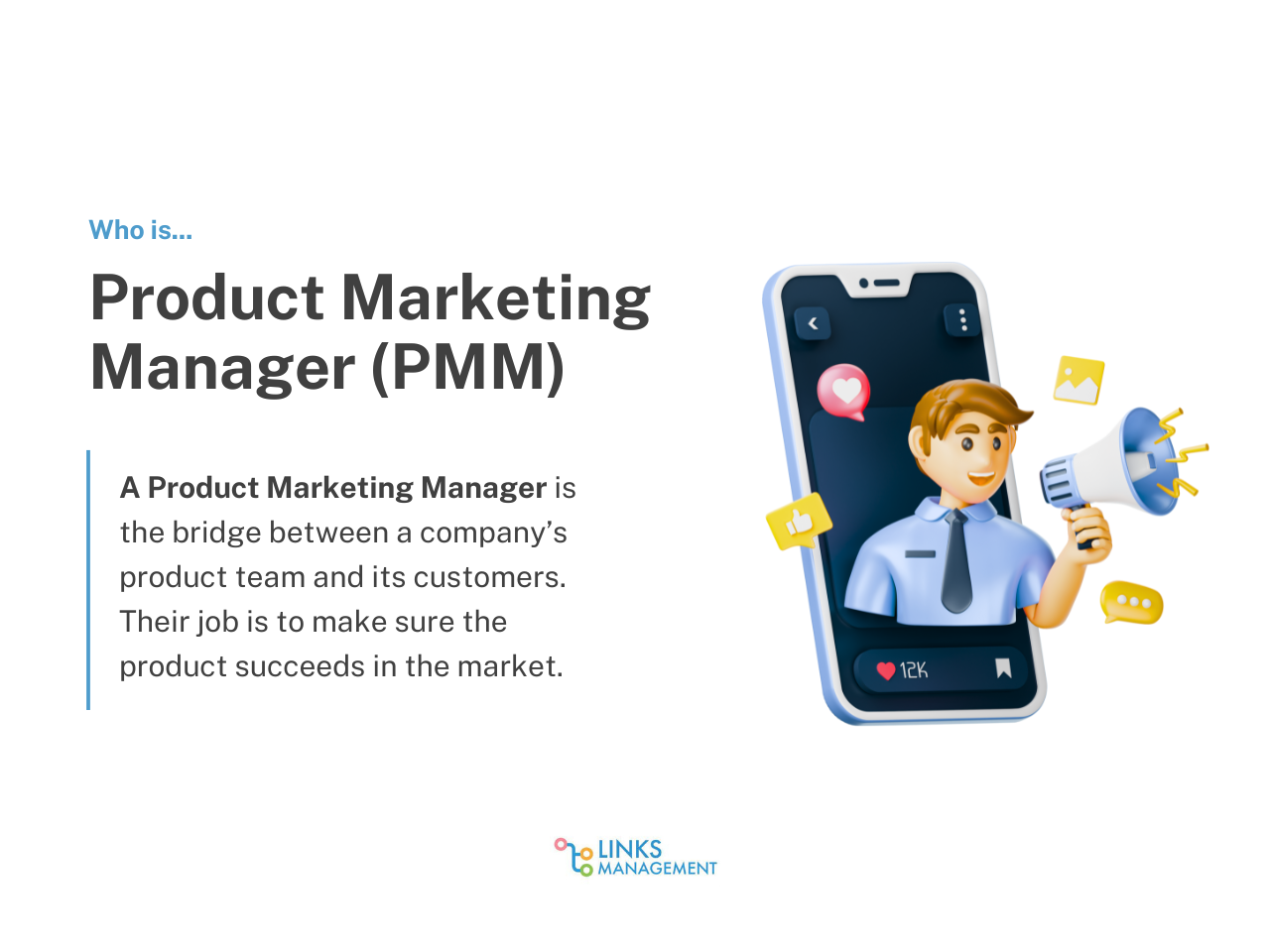
Their main objective is to create an offering that reaches the right audience and succeeds in the market.
For this, they typically collaborate with:
- Product managers, as they are the people who build the product in the first place.
- Marketing teams, as they are the ones promoting the offering.
- Sales teams, as they sell it.
- Customer success and/or customer support to make sure clients like the product.
PMMs don’t care much about the technical side of how a certain feature functions. But they do care about how to explain why people need this feature and how to create a message that sells.
Now, you might be wondering, isn’t that what product managers do? Not really.
Product Marketing Manager vs. Product Manager
While these roles sound very similar, they are completely different in both responsibilities and skill sets.
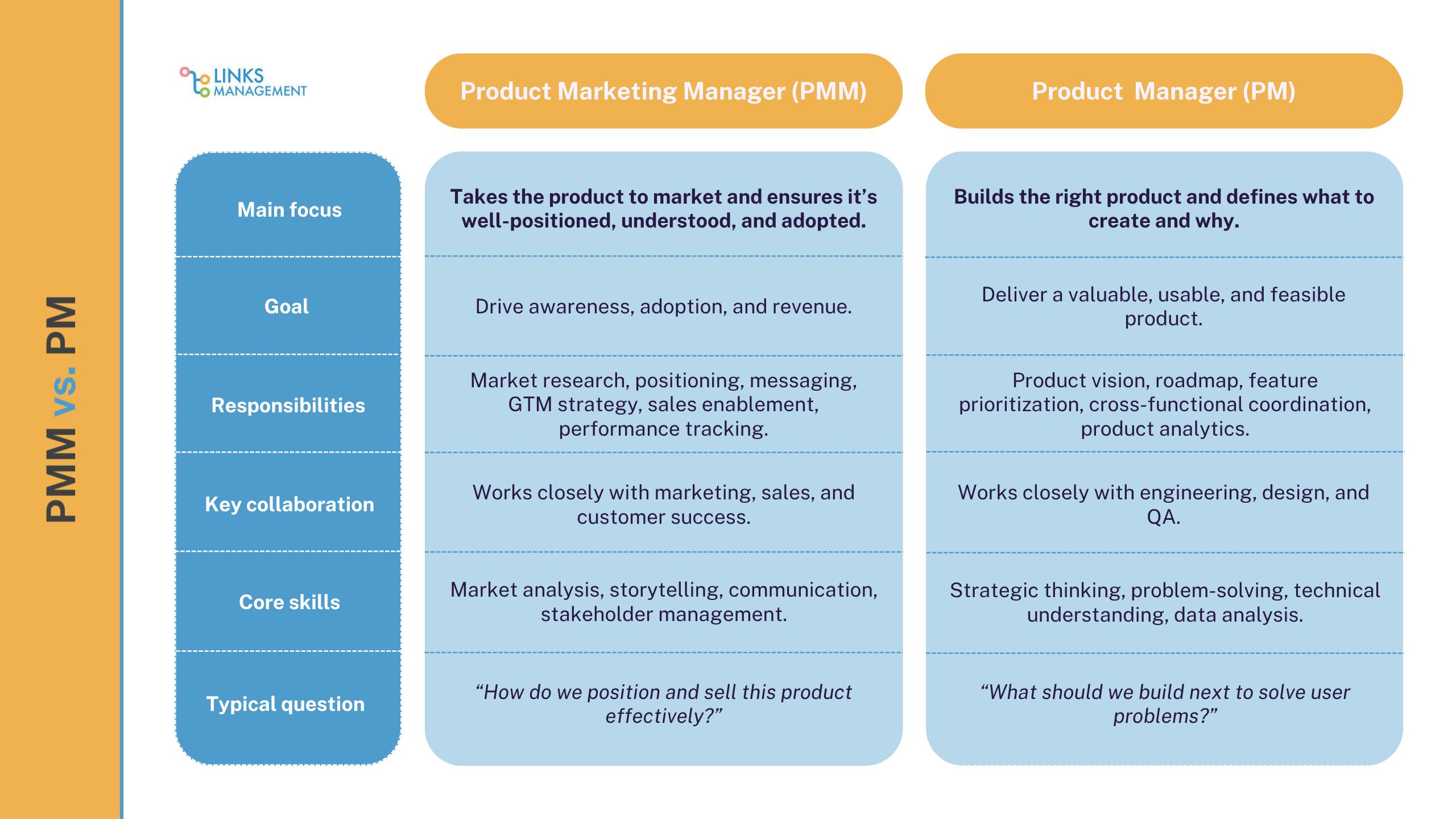
Let’s imagine a situation to help you understand these distinctions better:
1. Say, a SaaS company knows that people struggle to collaborate effectively during their calls. So, it decides to launch a whiteboard where everyone who’s on the call can add some notes, images, etc., in real time.
2. Next, the Product Manager (PM) steps in. Together with developers, designers, and a QA team, they start working on creating that whiteboard for real-time collaboration during the calls.
3. When they are done with at least a concept, the Product Marketing Manager (PMM) starts their work:
- They decide what messaging, positioning, target audience, etc., they should choose.
- Instead of just releasing it and saying it’s “A whiteboard where everyone can engage in real time,” they could position it like “A collaborative whiteboard that saves remote teams 30 hours a month” or anything more creative.
- The PMM is the one who creates the launch strategy, including landing page copy, email marketing campaigns, demo videos, etc. They also train the sales team on how to pitch the new feature and track how well it performs after launch.
So, overly simplified, it would look like this:
- PM: builds the product (e.g., “We build a collaborative dashboard for a remote team”).
- PMM: brings it to market and makes sure users understand what the product is (e.g., “Let’s show remote teams how they can save 30 hours a month by brainstorming and planning together in real time.”)
Of course, they don’t do this alone. They have whole teams working with them. But in any case, these would be their areas of responsibility and expertise.
Base Pay Range and Career Opportunities
If you’re interested in becoming a PMM at some point, you’d likely want to know what salary and career opportunities to expect. So, let’s check this before anything.
As for the pay range, the total pay is anywhere between $112,000 and $180,000 per year. With a median total pay of around $141,000 yearly.
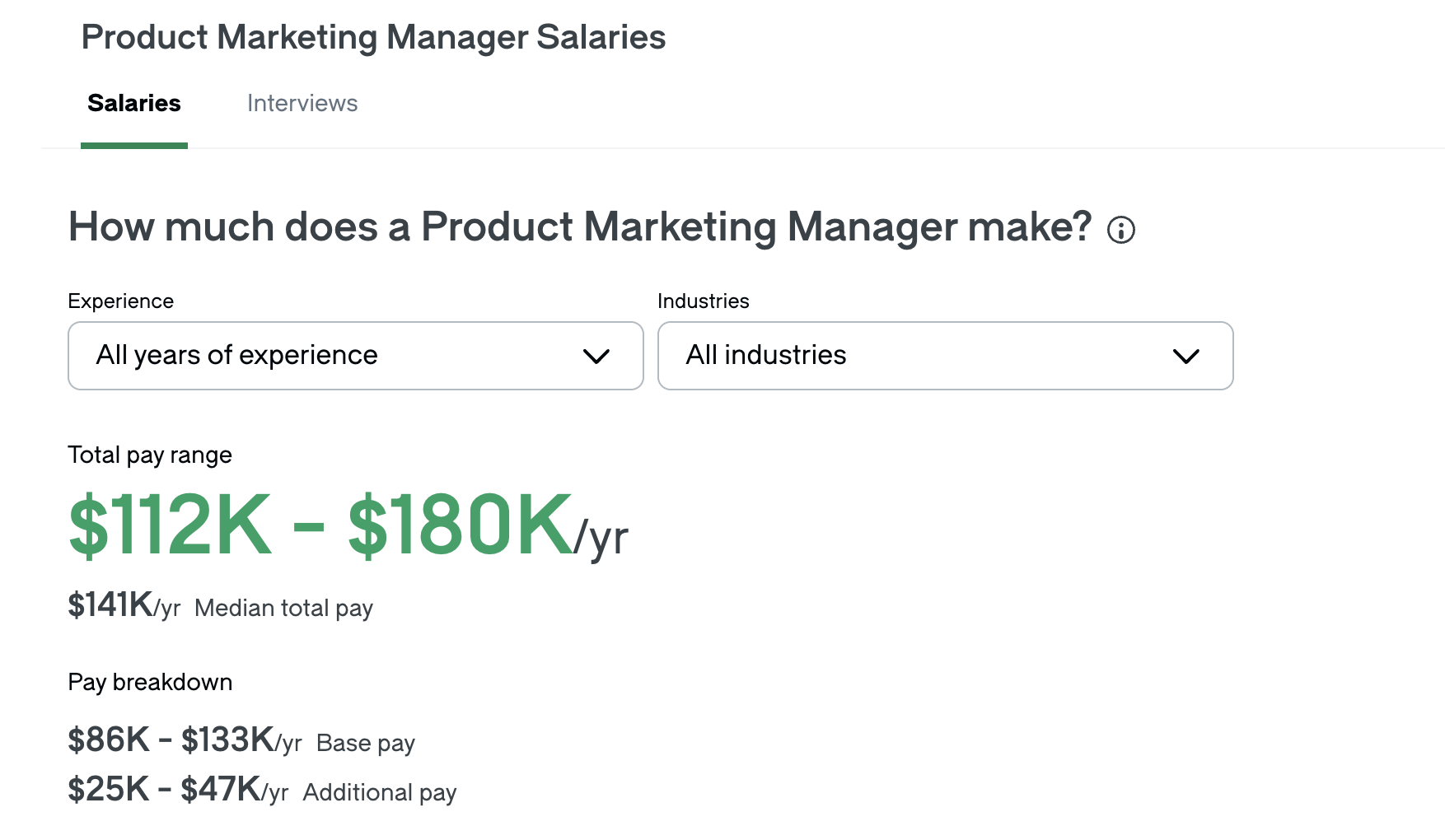
Source: Glassdoor
If we were to break this down further, overall, you can see the following situation:
- The average base salary is around $104,000/year.
- While bonuses, profit sharing, and commissions range anywhere between $2,000 and $25,000.

Source: Payscale
Now, let’s check the possible career paths you could take to become a PMM and progress further.
If we take the most typical, “book-like” career ladder, it would look similar to this one:
- Associate Product Marketing Manager or PMM Assistant. Often, this is an entry-level position for people from marketing, sales, or some product roles.
- Mid PMM. This is a typical profile of a product marketing manager we’ll check today.
- Lead PMM. This role means overseeing multiple projects and often having a couple of junior specialists under your management.
- Head of Product Marketing. This is a very strategic role where you own the PMM team.
- VP of Product Marketing. And finally, an executive role where you can influence the whole company’s direction.
Many PMMs also choose some related career paths instead of going all the way up to VP of Product Marketing. Some take on the PM’s role to be more involved in product creation. Others go into business development and consulting. So, as always, there are multiple options.
Responsibilities You Can Expect
This role might sound straightforward. But in reality, it has several specific responsibilities that connect different worlds. These are the major things you’ll likely face:
1. Audience and market research
All good marketing managers know that the first step to a product’s success is understanding your potential buyers and your niche. So, target audience and market research are definitely one of the main responsibilities for any PMM.
This is also something that you have to keep an eye on all the time. Because trends and tendencies change, and it’s your job to adapt to all those changes.
Overall, as part of this responsibility, you need to answer the following questions:
- Who your company is selling to,
- Why do your clients buy from you or your competitors,
- What makes your brand special, and whether people know that.
To answer these questions, you’ll need to build buyer personas and understand different segments of your audience. And of course, you have to analyze your niche, your competitors, and the overall demand in the market.
A good place to start is to do competitive analysis and build a perceptual map. This will give you a basic market understanding, including where your business stands and who you truly compete with.
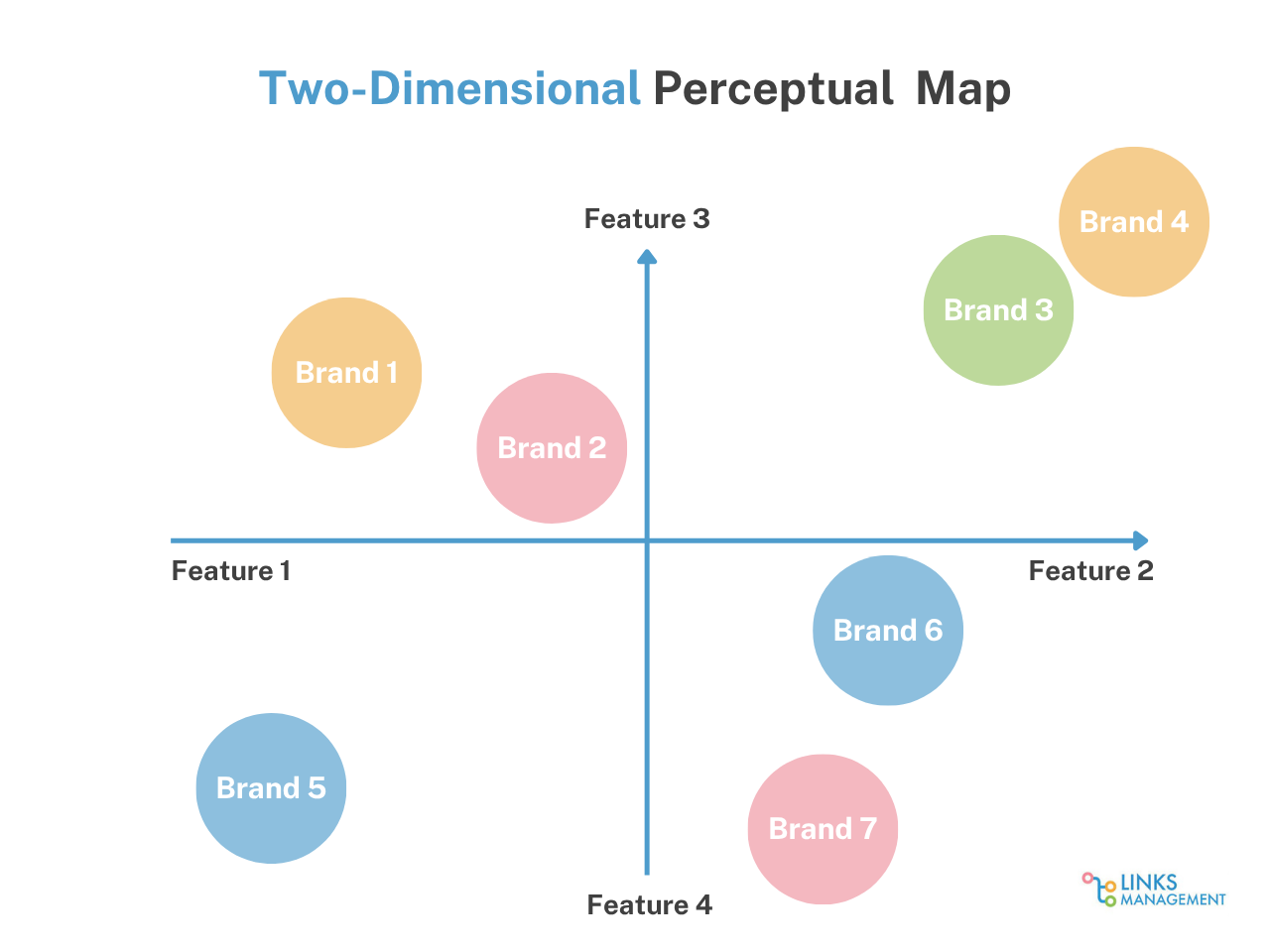
2. Brand messaging and product positioning
When you know all of the above, it’ll be much easier to create a clear product messaging and communicate it correctly. Sure, you won’t be the only person responsible for brand management. But still, you will have to work closely with a brand manager.
This responsibility, essentially, combines both a big vision and small everyday tasks:
- On one hand, you have to decide on your positioning based on what the market wants, which is more of a visionary task.
- But on the other hand, you have to make sure that all the other team members (from sales to marketing) communicate this big vision in their daily work.
Simply forming a value proposition and creating a brand story deck won’t be enough. You have to make sure that every tweet your company makes and every email you send transmits the same set of values.
And this is a huge part of product marketing management.
3. Go-to-market strategy and product launches
If you’ve ever heard of a go-to-market (aka GTM) strategy, that’s something PMMs are typically responsible for.
The whole idea of this framework is to launch things effectively, and that’s one of the main responsibilities of every product marketing manager.
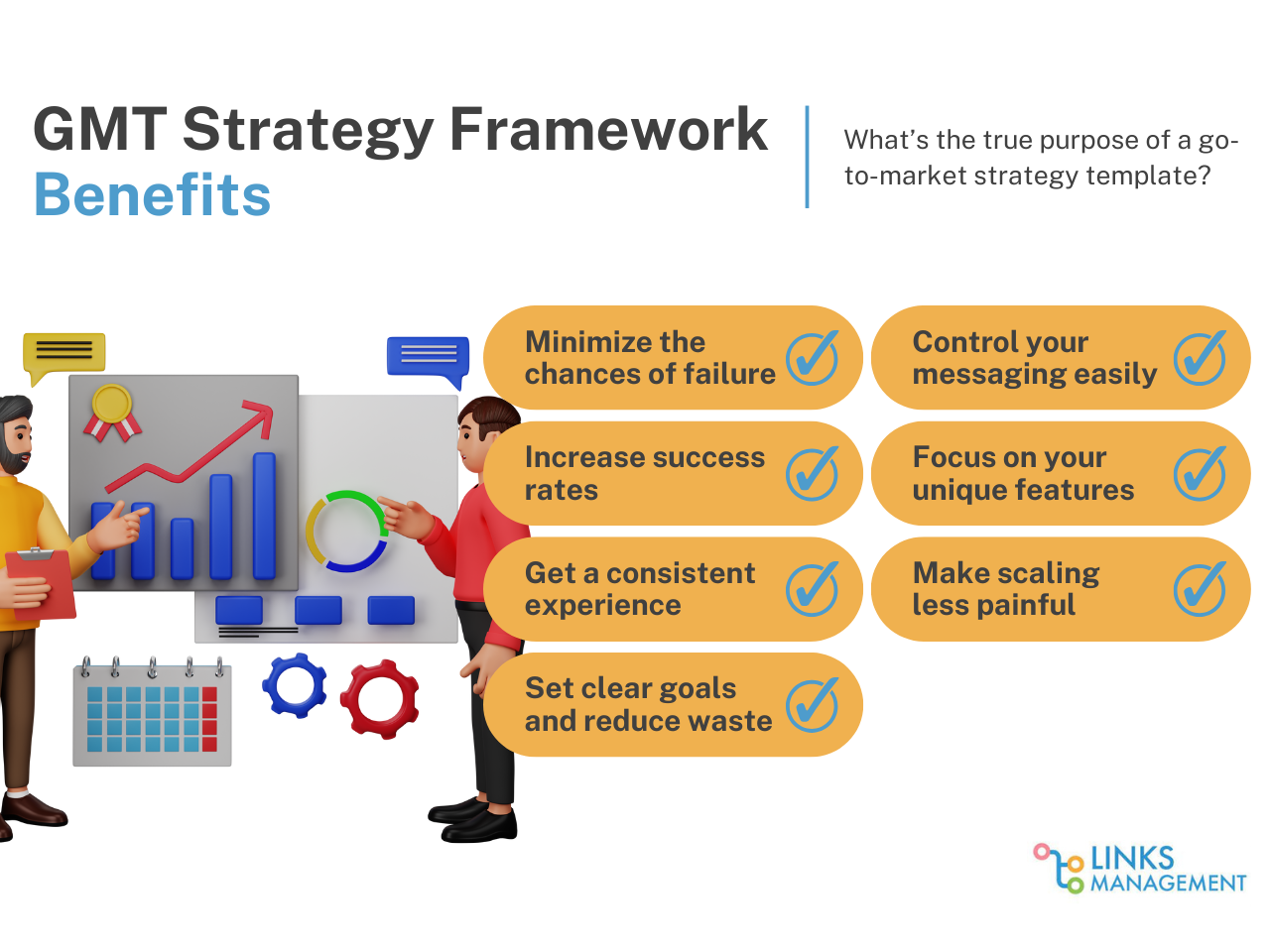
Go-to-market plans typically include:
- Research and strategic planning, including how your offering compares to others, what to do to differentiate, and how to communicate all that to your audience.
- Aligning everyone internally, making sure that everyone knows what to do and when.
- Creating product launch assets with the team to be prepared with email sequences, ads, landing pages, press releases, social media posts, etc.
- Tracking the results and adjusting based on that to make the most of the launch.
To know what to expect, you can check our GTM strategy template and the tips we’ve listed in this guide. It can at least serve as an inspiration for you.
4. Sales enablement and training materials for the sales team
We’ve already mentioned that product marketers often collaborate with sales. How does this typically look?
For sales to be effective, apart from tons of cold emails and calls, you need a clear script and a set of materials for any situation. Since PMMs understand what the audience needs and how to present a new launch to them, they often share all this with the sales team in the form of:
- Overviews and guides with product/feature descriptions, benefits, audience segments, customer needs, pricing, and tiers, etc.
- Different pitch materials, including visuals where needed (e.g., case studies, slides, etc.).
- A doc with typical objections and scripts to handle them.
- Competitor comparisons, etc.
ForAll these are important elements of a sales enablement strategy. While it could work differently in different companies, it’s always very effective to get PMMs’ input here.
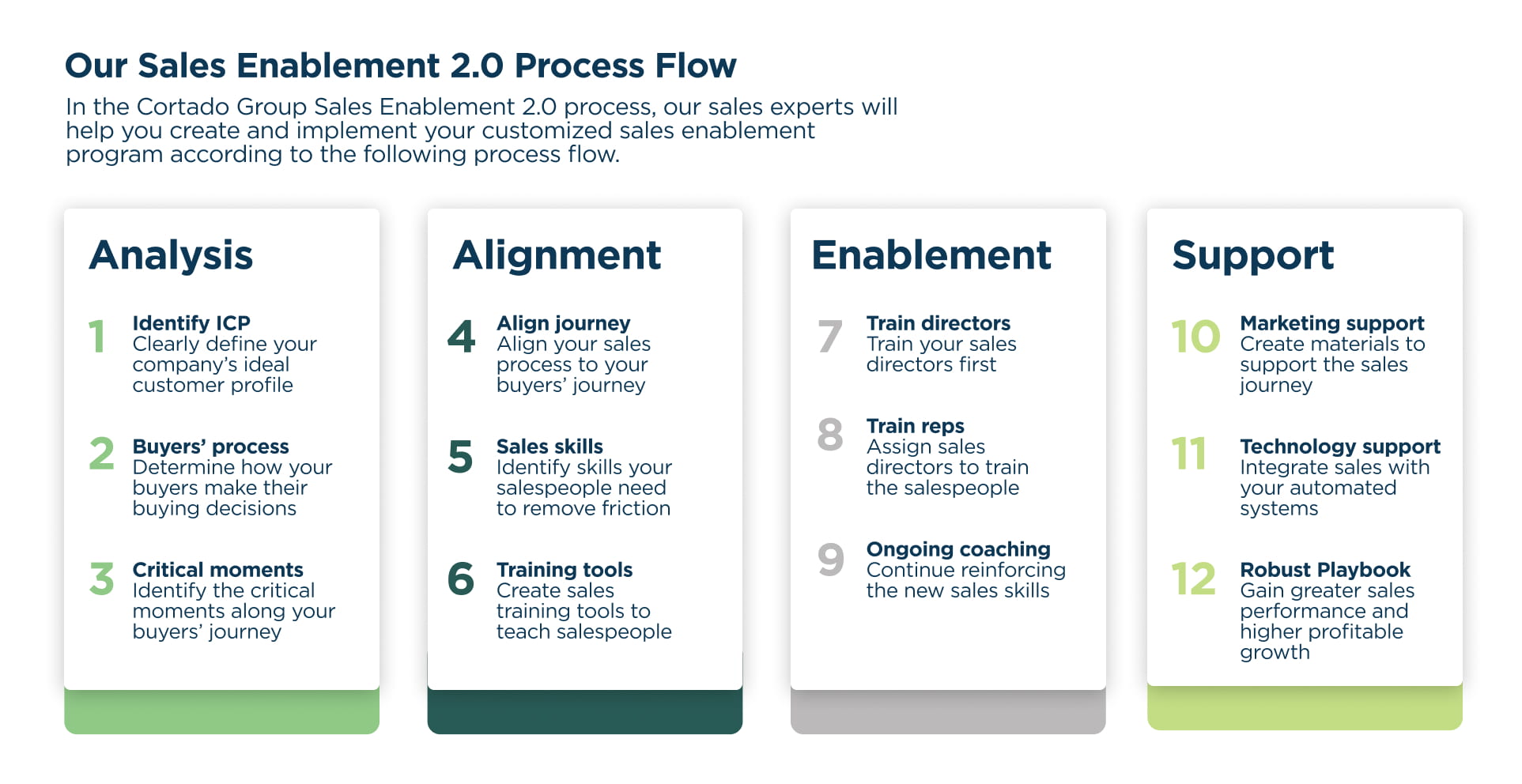
Source: Cortado Group
5. Customer feedback and performance analysis
Of course, no product management function can be successful without tracking feedback, analysing the outcomes, and tweaking your strategies.
So, it’s a big part of the product marketing manager’s responsibilities. You can’t guarantee that all the primary market analysis will lead to effective messaging and positioning right away.
Sometimes, launches aren’t as successful as expected. And it’s okay.
It doesn’t necessarily mean that PMM did a poor job. There are always factors that are hard to predict (e.g., market priority shifts, economic situation, political and sociological aspects, etc.). One person can’t foresee everything.
So, it’s important to have a clear performance tracking system:
- First, you need to collect as much data as you can through customer surveys, support tickets, tracking online sentiment, etc.
- Next, it’s important to organize all that information and find the main themes. Is something confusing for end users? Were they expecting other launches? Do they find your new product hard to integrate into their workflow?
- Finally, use all those answers and stats to improve your current offering.
Main skills and minimum qualifications for the role
Based on all the responsibilities we’ve mentioned above, you might already have a certain picture of the basic product marketing manager’s skills. Yet, let’s look into the details and list actual things you have to know and use.
Strategic, analytical, and technical skills
This job isn’t as technical as a product manager, sure. But you still need to have a very good analytical and strategic skillset. You have to understand:
- How the product development process and UX work.
- How to monitor competitors and do market analysis.
- And how to create a unique and effective positioning, track your campaigns, and make decisions based on real data, not just creative flow.
To make this possible, these are the things you can learn:
- Different frameworks, like SWOT and PESTEL, and how to build competitor matrices.
- How pricing is created, how product strategy is developed, and how different marketing techniques drive revenue.
- Marketing analytics and A/B testing. Plus, at least some platforms for performance tracking (Google Analytics, Amplitude, HubSpot, Salesforce, Looker Studio, etc.).
- The basics of user journeys and how to read release notes, roadmaps, etc.
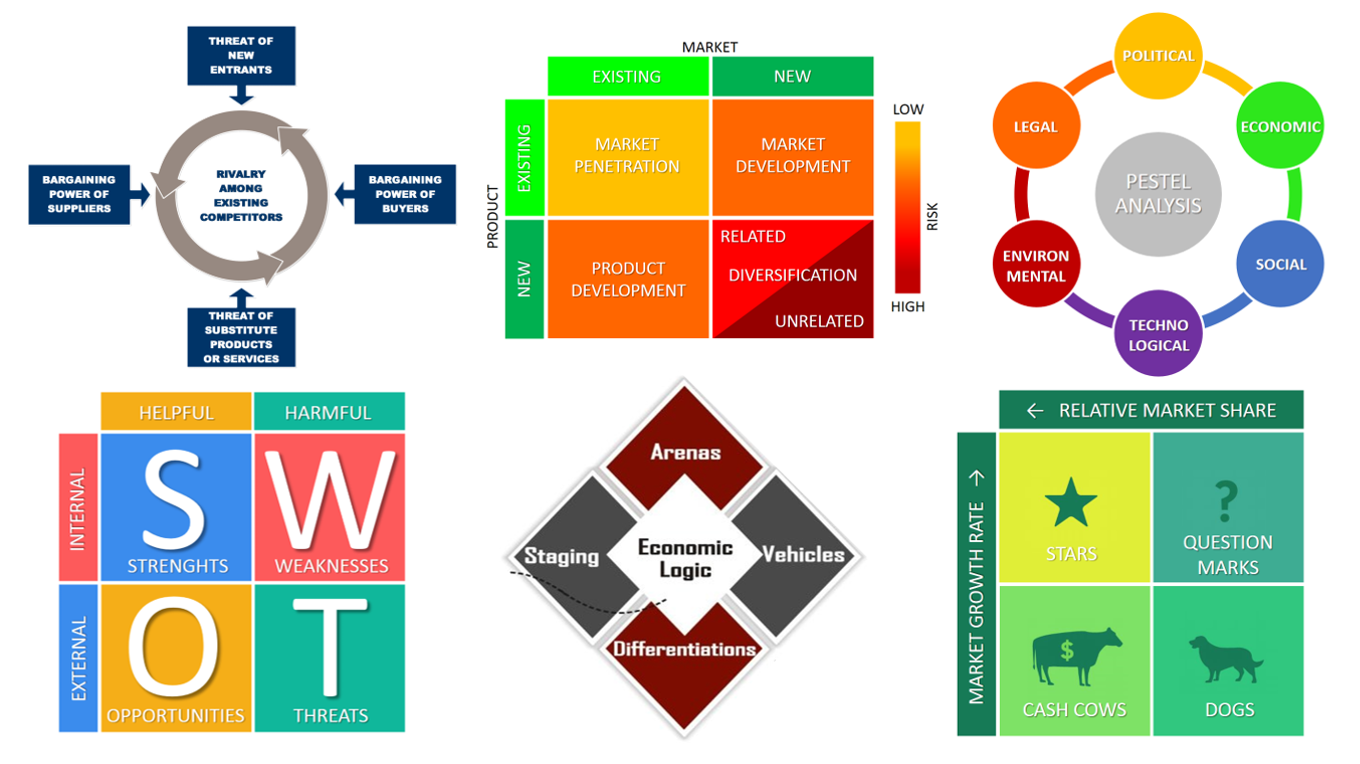
Source: B2U
Creative and marketing skills
Any product marketing manager’s job description will include a set of creative skills, from writing to basic design.
While you won’t write and design every single ad and landing page by yourself, it is still important to know how it’s done. Otherwise, it will be really hard to explain to your team what you expect from them.
Besides, to have a broad vision for your product, you have to understand how marketing strategy is created, and what tactics can actually work for your case.
These are the things you can learn to strengthen these skills:
- Direct copywriting to know what converts.
- Storytelling techniques and how different brands use them.
- At least basic design skills in Figma, Canva, or other tools.
- Success stories of the most legendary businesses to learn from the best and get some inspiration.
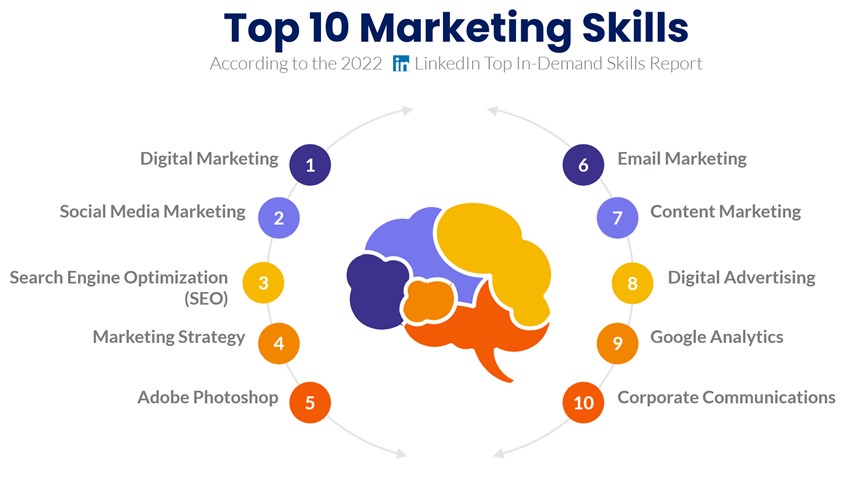
Source: Digital results
Communication and leadership skills
A big part of your job will be to communicate customer needs to your team properly. And then, decide how you can use that, either in product development and sales or marketing and customer success.
Besides, by definition, the product marketing manager’s role involves constant internal communication to make sure that everyone is aligned and understands what they’re doing. This is the only way to launch successful products that are actually valuable for your audience.
Here, you can improve the following:
- Make sure you know how to set clear goals and tasks.
- Learn what different people are responsible for and their skillsets to delegate effectively.
- Polish your communication skills by actively listening to others and being open to feedback.
- Read more about cross-functional collaboration because it will be something you use daily.
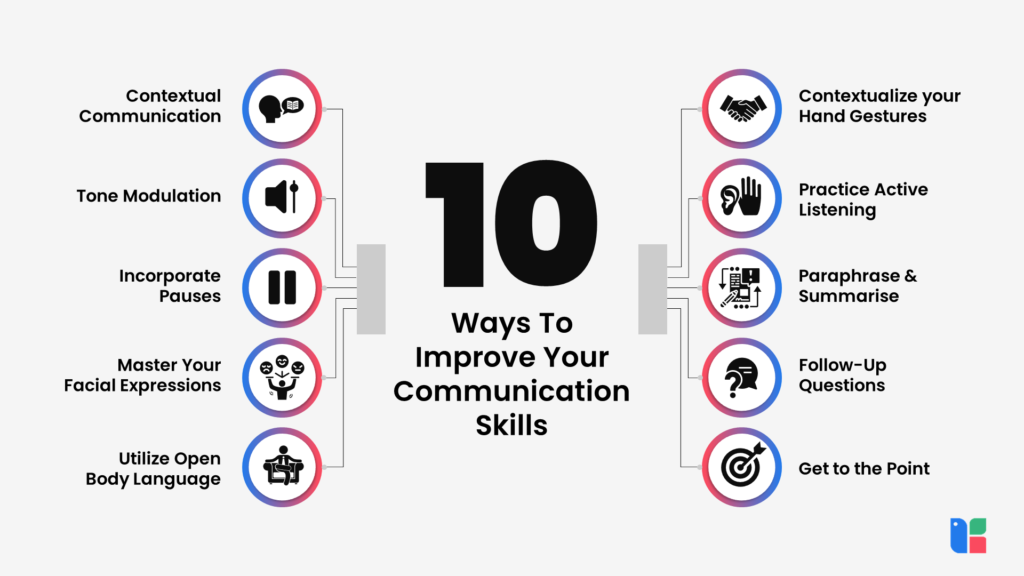
Source: Kapable
Conclusion
Today, we went far beyond a basic product marketing manager description. So now, you know pretty much everything about this role.
TodayIf you still want to understand the day-to-day of PMM better, we’d highly recommend checking some active LinkedIn accounts or even YouTube videos where people share their journeys.
TodayOther than that, you already understand what to expect from this job. So, we can only wish you luck!
Enter URL & See What We Can Do Submit the form to get a detailed report, based on the comprehensive seo analysis.





